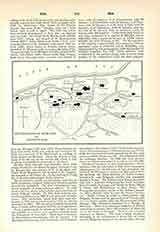

Goajira, Vicariate Apostolic of.—Goajira, the most northern portion of South America, is a peninsula running into the Caribbean Sea. It was the subject of a dispute between Venezuela and Colombia in 1891, and on arbitration was awarded to the latter and joined to the State of Magdalena. The area of the peninsula is about 5500 square miles. The scenery of Goajira is very picturesque; the temperature in the plains is very high, but temperate in the mountains. There is a good supply of cabinet wood in the country, but not much trade. The inhabitants, who number 80,000 (50,000 Catholics), are mostly of Indian or mixed race. They are tall and well-made. Formerly they were very intractable, but the Capuchins, who are in charge of the Catholic missions, have had a great influence over them, and large numbers have been converted. The language spoken is an Indian dialect of the Arawak-Maypure group (see Arawaks). The chief towns are Paraguaipoa, Calabacito, Maricha, Marocaso, and Soldado. Goajira was erected by Pope Pius X, January 17, 1905, into a vicariate Apostolic, dependent on the Congregation of Extraordinary Ecclesiastical Affairs. Msgr. Attanasio Maria Vincenzo Soler-Royo, O. F. M. Cap., was appointed to the vicariate as titular Bishop of great number of souls. But being above all solicitous for his own sanctification, he resolved to leave the world, and about 618 he took up his dwelling in a lonely place at the extremity of the Diocese of Trier and in the neighborhood of the little town of Oberwesel. It was here that, near a little chapel which he built, he began to lead an existence completely detached from material and perishable things. Nevertheless it was impossible for him so to conceal himself that his reputation did not spread far and wide. Pilgrims flocked to him, thus furnishing him with occasions to exercise the duties of hospitality in their behalf and to give them good advice. Two of them denounced him to Rusticus, Bishop of Trier, as a hypocrite and fond of good living, and he was called upon by the bishop to defend himself. According to the legend, he did so with the help of a miracle which resulted in the bishop’s confusion and in the manifestation of his unworthiness. King Sigebert III having learned of the occurrence summoned St. Goar to Metz and insisted that he should accept the episcopal see from which Rusticus had been driven. But the pious hermit was frightened by this offer, and asked time for reflection. On returning to his solitude he fell sick, and died before the burden of the episcopal dignity had been imposed upon him. A small church was dedicated to him, in 1768, in the little town on the banks of the Rhine which bears his name (St-Goar).
LEON CLUGNET

